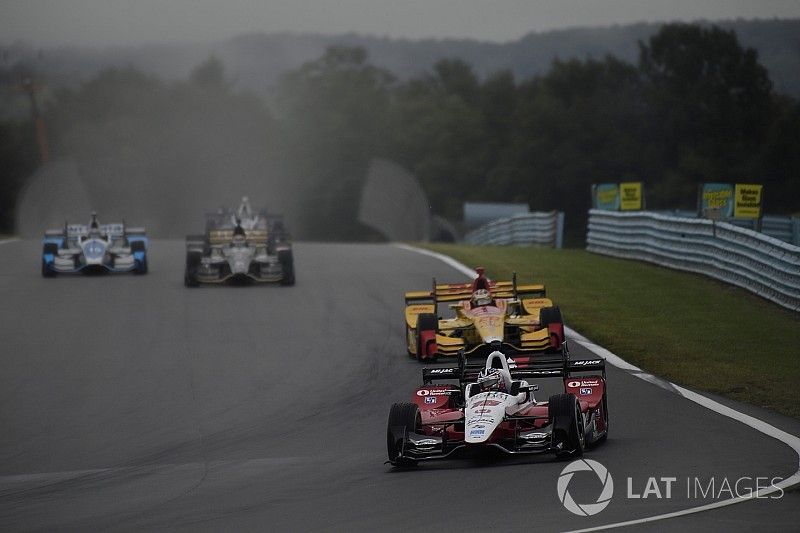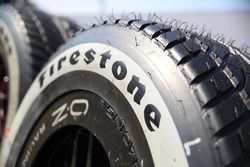Firestone to introduce new rain tire for 2018 IndyCar
Firestone Racing is set to bring new treaded tires for wet tracks this year, in response to the heavily reduced downforce of IndyCar’s spec aerokits to be used this season.

Photo by: Scott R LePage / Motorsport Images




Cara Adams, Firestone’s chief engineer and manager of race tire development, says that the hugely increased importance of mechanical grip in a reduced-downforce era for the Verizon IndyCar Series has seen the company working on a heavily revised rain tire. Wet track surfaces prompt teams into adding a lot more downforce to maximize cornering grip, but the vast reduction in available downforce on this year’s IndyCar will prompt teams and drivers to seek more grip from the tire compounds.
During a long-form interview with Motorsport.com, Adams explained: “We’re working on our wet weather tires, coming up with a redesign of our tread pattern as well as compound changes. We won’t see that until Detroit at the very earliest, but it’s a really neat project that we’ve been able to work on with engineers and scientists from our entire engineering group and our pattern engineering group.
“We’re hoping to see those new wet tires in action in Detroit – there’s often rain at some point in that event – and it’s a pretty exciting program.
“We’ve used a lot of feedback from the teams and drivers to develop this new pattern. We’re confident it should be something that’s a good mix of answering the demands for road courses and street courses, and that will be good because it’s hard to get a tire that works for both.”
Asked if the general idea was to not only soften the compound, but have the tread blocks move around more in order to generate more heat and therefore grip, Adams admitted “we’re keeping some of the details secret for now.
“But what I can tell you is that this pattern is going to be great for when the cars transfer load onto the pattern. There are things we were able to do in the design of this pattern that we weren’t able to do before, but ever-improving technology has allowed us to take a big step.”
Be part of Motorsport community
Join the conversationShare Or Save This Story
Subscribe and access Motorsport.com with your ad-blocker.
From Formula 1 to MotoGP we report straight from the paddock because we love our sport, just like you. In order to keep delivering our expert journalism, our website uses advertising. Still, we want to give you the opportunity to enjoy an ad-free and tracker-free website and to continue using your adblocker.















Top Comments